Mexican rituals and ceremonies come from a long mix of Indigenous roots, Spanish influence, and modern life. They are not just history lessons; they are active ways people honor loved ones, celebrate life, and stay connected as a community. From the quiet remembrance of Día de los Muertos to the loud pride of Independence Day, these traditions show the heart of Mexican culture, with strong links to nature, faith, and community.
These many practices help explain Mexico, a country known for its music, food, and love of life. They blend beliefs and customs that have grown over thousands of years, building a cultural heritage that still shapes daily life. Many of these traditions are so meaningful that UNESCO lists them as Intangible Cultural Heritage of Humanity, showing their value around the world.
What Are Mexican Rituals and Ceremonies?
Mexican rituals and ceremonies are group events that strengthen cultural identity, teach values, and mark the cycles of life, death, and renewal. They keep changing with the times, yet hold onto their history. These events range from national holidays to private family rites, each playing an important role in social life.
To understand them, you need more than just watching. It helps to see the layers of meaning, bright symbols, and shared spirit that give them life. They show the strength and creativity of the Mexican people, who blend many influences into a rich and meaningful culture.
Roots in Indigenous, Colonial, and Modern Traditions
Mexican rituals and ceremonies are shaped by a long history. Before Spain arrived, Indigenous peoples like the Maya and Aztecs had complex spiritual practices, precise calendars, and rituals that honored gods, nature, and ancestors. These beliefs built a strong base focused on balance with nature and the cosmos.
The Spanish brought Catholicism, which often mixed with Indigenous practices (syncretism) instead of replacing them. Catholic saints were linked with older deities, and Christian holidays took in parts of earlier festivals. Over time, new elements joined the old, keeping their roots while fitting modern life, creating a style of tradition unique to Mexico.
Why Rituals and Ceremonies Remain Central to Mexican Culture
In Mexico, rituals and ceremonies are more than customs; they are central to community life. They help people feel connected in a fast-changing world, linking them to their past, to each other, and to their beliefs. They mark big moments-births, coming-of-age, marriage, and death-and give those moments deep meaning.
These shared events build unity. Preparing food together, dancing, or joining a procession creates strong memories and bonds. They remind people of the country’s heritage and its spirit of resilience.
Which Major Mexican Rituals and Ceremonies Define the Culture?
Across Mexico, many major rituals and ceremonies offer clear views into the country’s history, faith, and sense of community. These events draw huge crowds every year and turn cities and towns into stages of color and tradition.
From quiet remembrance to joyful national pride, these moments bring old customs into today’s life and give powerful shared experiences.
Día de los Muertos – Day of the Dead
Día de los Muertos (November 1-2) is one of Mexico’s most famous traditions and carries deep emotion. Named by UNESCO as Intangible Cultural Heritage, it honors loved ones who have died and shows a view of death as part of life. People believe the barrier between living and dead grows thin, and spirits visit their families.
Families set up home altars called “ofrendas,” with photos, favorite foods and drinks, sugar skulls (calaveras de azúcar), and bright orange marigolds (cempasúchil). Each item has meaning: water for thirsty spirits, papel picado for wind, and candles to light the way. Families also clean and decorate graves and share food, music, and stories in cemeteries, turning a sad idea into a warm reunion.

- Common ofrenda items: photos, candles, water, pan de muerto, sugar skulls, papel picado, cempasúchil, favorite foods and drinks
Semana Santa – Holy Week
Semana Santa, usually between mid-March and mid-April, marks the passion, death, and resurrection of Jesus Christ. It is one of the most important dates in the Catholic year and a time of deep reflection for many Mexicans.
People take part in processions, reenactments of the Via Crucis, and scenes from the Last Supper and Crucifixion. Many towns hold solemn parades with religious figures and traditional dress. This week also matches a major vacation period, so many families combine prayer with travel.
- Typical events: processions, Via Crucis reenactments, church services, family gatherings
Día de la Virgen de Guadalupe
On December 12, Mexico honors the Virgin of Guadalupe, the country’s patron saint. Her image is said to have appeared on Juan Diego’s cloak in 1531 at Tepeyac in Mexico City. She became a strong symbol of faith and national identity, often called the “Mother of Mexico.”
Millions walk in pilgrimages-many on foot-to the Basilica of Our Lady of Guadalupe. They sing, pray, and dance. The celebrations show her lasting impact and the comfort people find in her protection.
Las Posadas – Christmas Rituals
Las Posadas run from December 16 to 24 and recall Mary and Joseph’s search for shelter. At sunset, groups carry candles and figures of Mary and Joseph from house to house, singing and asking for a place to stay, until a home welcomes them.
Inside, people pray, sing, and enjoy a party with food, drinks, and piñatas. Each of the nine nights focuses on a value like humility, strength, or charity, blending European religious customs with Mexican traditions and bringing communities closer before Christmas.
Quinceañera Ceremonies
The Quinceañera (XV Años) marks a girl’s step into womanhood at 15. It is more than a birthday; it is a rite of passage that shows her new place in family and community. The day often starts with a Catholic mass where she renews her faith and receives blessings.
After church, a large party follows. Key moments include the gifting of a doll (her last childhood toy) and changing flat shoes to high heels (her first step into adulthood). She often dances a waltz with her father and celebrates with a court of close friends. Music, dancing, food, and speeches honor her new stage in life.

- Symbolic moments: last doll, shoe change, father-daughter waltz, court of honor
Mexican Independence Day and National Celebrations
Mexican Independence Day is on September 16, but the biggest moment is the night of September 15, “El Grito de Dolores.” It marks the call to arms by Miguel Hidalgo in 1810.
Each year, the President repeats the “Grito” from the National Palace balcony in Mexico City. People across the country shout “¡Viva México!” and watch fireworks. All month long, streets fill with flags, parades, music, and traditional foods that strengthen national pride and shared history.
How Do Indigenous Rituals Influence Modern Mexican Ceremonies?
Indigenous rituals still shape many modern Mexican ceremonies. Their influence appears in symbols, respect for nature, and strong community participation. These ideas did not fade; they are part of daily life and major festivals.
This blending of beliefs creates a distinct style that feels both old and new, and helps keep ancient knowledge alive.
Pre-Hispanic Ritual Practices
Before Europeans arrived, many advanced cultures lived in what is now Mexico. Their ceremonies linked the cosmos, farming, and the divine. For the Aztecs and Maya, rituals kept balance with nature, honored many gods, and aimed for good harvests.
Offerings included food, copal incense, and precious items. Some rites used bloodletting and human sacrifice to speak to the gods. Ceremonies were carefully timed with calendar systems like the Maya Tzolk’in, matching the stars and farming seasons. While extreme practices ended after colonization, respect for nature, offerings, and cosmic cycles still appears in many modern traditions.
Mayan and Aztec Ceremonial Legacies
Maya and Aztec legacies still run through Mexican culture. The Maya, known for astronomy and calendars, held rituals for gods, nature, and ancestors, often tied to sky events. Some Maya ceremonies still happen today, like the Taa’jche “new fire” rite during the Chichen Itza equinox and the Ch’a Chaac rain ceremony, guided by shamans (X’men) with strong community roles.
The Aztecs built complex ceremonies linked to a wide belief system. Cocoa rituals, copal incense, and the sacred symbol of corn were part of their practices. While Spanish rule changed much, the value placed on offerings, shared celebration, and key crops remains part of modern life. These roots give today’s ceremonies depth and meaning.
Dance of the Voladores and Other UNESCO-Recognized Traditions
The Dance of the Voladores de Papantla, from the Totonac people of Veracruz, is one of Mexico’s oldest living rituals and holds UNESCO status. Five men climb a very tall pole (18 to 38 meters). Four “voladores” tie themselves with ropes and spin headfirst toward the ground while the “caporal” stands at the top, dancing and playing music. The rite gives thanks for fertility and harvests and shows courage, skill, and spiritual ties to the sun.

Other UNESCO-recognized traditions include the Danza de los Parachicos in Chiapa de Corzo, where dancers with carved masks and maracas honor patron saints, and Oaxaca’s Guelaguetza Festival, which brings Indigenous groups together through dance, music, and dress. These honors show the artistic, historical, and spiritual value of Mexico’s ceremonies.
What Are the Religious and Spiritual Elements in Mexican Ceremonies?
Religion and spirituality shape Mexican ceremonies at every step. Most people in Mexico identify as Catholic, but many practices blend Catholic belief with Indigenous rites, creating a style unique to the country.
These elements show up in the roles of priests and ceremony leaders, and in objects like altars, offerings, incense, and flowers that connect daily life to the sacred and to ancestors.
Catholic Influences and Syncretism
Nearly 80% of Mexico identifies as Catholic. This strong influence appears in Holy Week, baptisms, first communions, and more. Churches and cathedrals, like the Cathedral Basilica of the Immaculate Conception in Mazatlán and Our Lady of Guadalupe in Puerto Vallarta, stand as clear signs of this faith.
At the same time, Catholicism in Mexico often blends with older Indigenous traditions. The Day of the Dead merges All Saints’ Day and All Souls’ Day with ancestor rites. The yearly pilgrimage to the Virgen de Guadalupe echoes long-held respect for mother figures and sacred places. Together, these create a spiritual life that is distinct to Mexico.
Role of Shamans, Priests, and Ceremony Leaders
Spiritual leaders guide many Mexican ceremonies. Catholic priests lead sacraments like baptisms, first communions, confirmations, and weddings, keeping church tradition and offering counsel.
In Indigenous communities, shamans and traditional leaders are also central. In Maya rites, the shaman (X’men) acts as a bridge between the visible and the invisible, leading prayers, reading signs, and using copal for cleansing. Their knowledge, passed down over generations, helps keep ceremonies true to their roots and strengthens community ties.
Symbolic Objects: Altar, Ofrenda, Copal, Cempasúchil
Objects carry deep meaning in Mexican ceremonies. The altar, especially during Día de los Muertos, often has tiers to symbolize heaven, earth, and the underworld. On it sits the ofrenda, or offering, arranged with care to welcome the dead with photos, favorite foods, and personal items.
Copal is an aromatic resin burned as incense. Its smoke is said to cleanse spaces and carry prayers upward. The name comes from Nahuatl “copalli,” showing its Indigenous roots. The bright cempasúchil (marigold) is everywhere during Day of the Dead. Its orange color and strong scent are believed to guide spirits toward the altar.
How Do Families Celebrate Major Life Events in Mexico?
Family is central in Mexico, and major life events bring people together with warmth and joy. These are often big gatherings that include extended family, friends, and neighbors. They mix religious rites with lively parties, creating lasting memories.
Each milestone carries its own rituals, from early childhood to marriage, tying personal life to faith and community.
Baptism, First Communion, and Confirmation
Baptisms (Bautizos) usually happen when a child is 6-12 months old. They welcome the child into the Christian faith with holy water and celebrate with a large family party. Godparents play an important role in guiding the child’s spiritual path.
First Communion (Primera Comunión) often comes at ages 7-12 and marks the child’s first Eucharist. Families gather for mass and a party afterward. Confirmation (Confirmación), usually at 14-16, marks a deeper commitment to church teachings and also ends with family celebrations.
- Key roles: parents, godparents, priest
- Common elements: church service, photos, shared meal, music
Weddings and Family Gatherings
Mexican weddings are known for their size, joy, and community spirit. Many last multiple days and combine Catholic rites with local traditions. A church mass usually starts the celebration, where the couple exchanges vows and receives blessings.
Afterward comes a lively party with music, dancing, and abundant food. A unique symbol is the “lazo del amor,” a rosary or rope placed around the couple in a figure-eight to show unity. The event brings generations together to sing with mariachi, dance, and share the moment.
Birthday Traditions: Piñatas and Cake Rituals
Children’s birthdays often feature a piñata: a papier-mâché figure filled with candy and toys. Blindfolded kids take turns hitting it while friends sing until the treats fall, and everyone rushes to collect them. Some say the seven spikes of a classic star piñata represent the seven deadly sins, a link to its use in early religious teaching.
Another custom is the cake bite. After “Las Mañanitas,” family and friends chant “¡Mordida, mordida!” and the birthday person takes the first bite. Then, someone often pushes their face gently into the cake. It is a playful show of love and good luck.
Mother’s Day, Father’s Day, and Grandparents Day Ceremonies
Día de las Madres (Mother’s Day) is on May 10 and is widely celebrated. Families bring flowers, gifts, and meals, and schools host shows where children sing and dance for their mothers. Grandmothers are honored too.
Día del Padre (Father’s Day) is observed on June 20, giving families a chance to thank fathers. Día del Abuelo (Grandparents Day) on August 28 honors grandparents for their care, wisdom, and love. These days highlight the strong respect for elders in Mexican families.
Which Mexican Ceremonies Are Recognized by UNESCO?
Many Mexican traditions hold UNESCO status as Intangible Cultural Heritage of Humanity. This shows their deep historical, artistic, and social value and helps keep them alive for future generations. These are treasures shared with the world.
From gravity-defying dances to large community festivals, UNESCO-listed traditions show how Indigenous and Spanish roots come together in Mexico.
Dance of the Voladores
The Dance of the Voladores de Papantla comes from the Totonac people in Veracruz and holds UNESCO recognition. Five men climb a tall pole. Four tie themselves with ropes and fall backward in spirals toward the ground, like birds in flight, while the fifth-the caporal-stays on top, dancing and playing a flute and drum. The rite is an offering for rain, fertility, and harvests, and it shows skill, bravery, and spiritual focus.
Danza de los Parachicos
The Danza de los Parachicos takes place each year from January 15-23 in Chiapa de Corzo, Chiapas, and is recognized by UNESCO. Dancers honor patron saints, especially San Sebastián, in streets full of music, movement, and costume.
“Parachicos” wear carved wooden masks with bearded faces, colorful ribbons, and carry rattles called “chinchines.” The dance blends Indigenous and Spanish elements and brings the community together in celebration.
Guelaguetza Festival
Oaxaca’s Guelaguetza, around July 16, is a major cultural event with UNESCO recognition. “Guelaguetza,” from a Zapotec word meaning shared gifts and service, reflects the festival’s spirit of community exchange and pride in Indigenous roots.
Groups from across Oaxaca perform their dances in traditional dress, telling local stories through movement. The city fills with street shows, markets, and displays of custom and craft, offering a clear view of Oaxaca’s many cultures.
Mariachi and Charrería Traditions
Mariachi music, with trumpets, violins, and guitars, began in Jalisco and is a symbol of Mexican identity. Bands in charro suits play songs about love, loss, and national pride in plazas, restaurants, and family events.
Charrería, Mexico’s national sport, is a rodeo-style set of events dating back to the 1500s. Charros show skill in roping and riding. Beyond sport, it keeps ranch and horse traditions strong across generations. Both Mariachi and Charrería hold UNESCO recognition and reflect Mexican style and heritage.
What Are the Key Ritual Symbols and Artistic Expressions?
Mexican ceremonies use many symbols and art forms that carry meaning. These are not just decorations; they help tell stories about history, faith, and community. From paper cutouts to dance and fine crafts, each piece adds to the message.
These songs, images, and objects pass values from one generation to the next and make each ceremony a full sensory experience.
Calavera, La Catrina, Papel Picado, and Other Day of the Dead Symbols
Day of the Dead is rich with symbols. The calavera (skull) is playful rather than scary and reminds people that life is brief. Sugar skulls often carry the name of the person being honored. Art also uses skulls in many ways.
La Catrina, created by José Guadalupe Posada, shows a stylish female skeleton and reminds us that death comes to all, rich or poor. Papel picado banners, cut with delicate designs, stand for life’s fragility and the wind, one of the four elements on an ofrenda. Many also see monarch butterflies as messengers from the dead, and the Xoloitzcuintli dog as a guide for souls crossing into the next world.
Traditional Music and Dance: Jarabe Tapatío, Huapango, Danza del Venado
Music and dance sit at the center of many ceremonies. The Jarabe Tapatío (Mexican Hat Dance) shows playful courtship with bright costumes, quick steps, and a sombrero at center stage. It often appears in festivals, especially in Guadalajara.
Huapango, from the Huasteca region, mixes fast footwork with violin, guitar, and jarana. It can feel like a friendly duel that shows skill and pride. La Danza del Venado (Deer Dance), from the Yaqui and Mayo peoples of the northwest, retells the deer hunt with dancers wearing antlers and other figures acting as hunters. It carries strong ties to nature and old beliefs.
Artisan Crafts for Rituals: Alebrijes, Talavera, and Textiles
Alebrijes are brightly painted figures of fantastic creatures, carved from wood or made from papier-mâché. They appear in parades and displays, like the annual Alebrijes parade in Mexico City, and stand for imagination, dreams, and folklore.
Talavera Poblana, from Puebla, is hand-painted ceramic work known for its blue-and-white designs. It decorates homes and churches and often appears in religious settings. Traditional textiles, like embroidered huipiles, date back to pre-Hispanic times. Their colors and patterns show identity and heritage and are worn proudly during festivals and ceremonies.
How Do Rituals and Ceremonies Foster Community and Identity?
Rituals and ceremonies in Mexico bring people together and shape both group and personal identity. They tie individuals into a shared story, with common values and a strong sense of belonging. They honor the past, celebrate the present, and help people look ahead together.
These traditions also pass culture to the next generation, keeping it alive and relevant.
Collective Participation in Festivals
Big festivals thrive on group involvement. Independence Day, Semana Santa, and Día de los Muertos turn streets into spaces for parades, music, dance, and shared meals. Families team up to make tamales or pan de muerto, turning cooking into a family ritual.
During Las Posadas, neighbors move from house to house, singing and sharing treats. In Indigenous ceremonies led by Maya shamans, everyone has a part-bringing offerings, lighting candles, or joining prayers. This shared action strengthens bonds and keeps values alive.
- Common ways people join in: cooking together, decorating streets and altars, marching in processions, singing, dancing, and praying
Transmission of Values Across Generations
These traditions teach values, knowledge, and identity from elders to children. Building Día de los Muertos altars teaches kids about honoring ancestors and the cycle of life and death. Grandparents often lead the way, guiding younger family members.
Religious rites like baptisms and communions teach faith and community duty. Even birthday customs like the piñata teach patience, sharing, and joy in group play. Music, stories, and hands-on work pass down respect, resilience, and spirituality.
- Values often taught: family loyalty, respect for elders, care for nature, teamwork, faith, and remembrance
Common Questions About Mexican Rituals and Ceremonies
People new to Mexican culture often have questions about its rituals and ceremonies. Clear answers help visitors and learners appreciate these traditions and engage with respect. Below are common questions and short explanations that show how these practices fit into daily life.
Use these as a guide to better understand and respectfully witness these events.
Do All Mexicans Observe the Same Ceremonies?
Major events like Día de los Muertos, Semana Santa, and Independence Day are common across Mexico, but the country has many regional differences. With 68 Indigenous communities and 364 Indigenous languages, each area brings its own practices and local stories. Even for Day of the Dead, how altars look or which foods are offered can vary a lot from place to place.
Groups like the Nahuas, Maya, Zapotec, Mixtec, and P’urhépecha keep distinct customs while blending them with Catholic rites in their own ways. Expect a wide range of celebrations rather than one single style.
Can Visitors Participate in Traditional Ceremonies?
Yes, visitors can often join or watch, as long as they are respectful. Big public events-like Día de los Muertos in Oaxaca or Pátzcuaro, or the Guelaguetza-welcome guests to observe altars, parades, music, and dance.
For more private or sacred Indigenous rites, like a Maya healing ritual or a Temazcal sweat lodge, you may join through trusted tours or cultural centers. Be sure to follow the directions of local leaders, ask before taking photos, and respect local rules. Think of yourself as a guest in someone’s home.
What Is the Best Time of Year to Experience Mexican Rituals?
Mexico has ceremonies all year, but some times are especially active:
| Time | Where/What | Highlights |
|---|---|---|
| Late Oct-Nov 2 | Day of the Dead (Mexico City, Puebla, Oaxaca) | Altars, marigolds, cemetery visits |
| Mid-Mar-Mid-Apr | Semana Santa (nationwide) | Processions, Via Crucis, church services |
| Sept 15-16 | Independence Day (especially Mexico City) | El Grito, fireworks, parades |
| Dec 12-Jan 6 | Guadalupe-Reyes season | Virgen de Guadalupe, Las Posadas, Reyes Magos |
| July | Oaxaca | Guelaguetza Festival |
| Jan 15-23 | Chiapa de Corzo | Danza de los Parachicos |
The “best” time depends on the events you want to see, but late autumn and winter offer many major celebrations across the country.

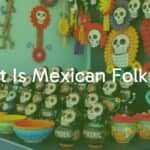
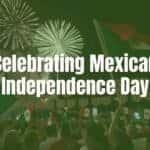


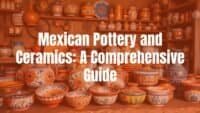
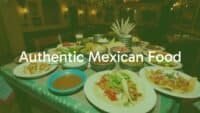
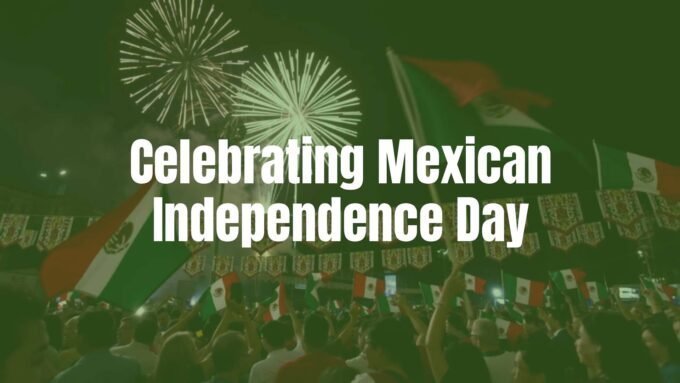
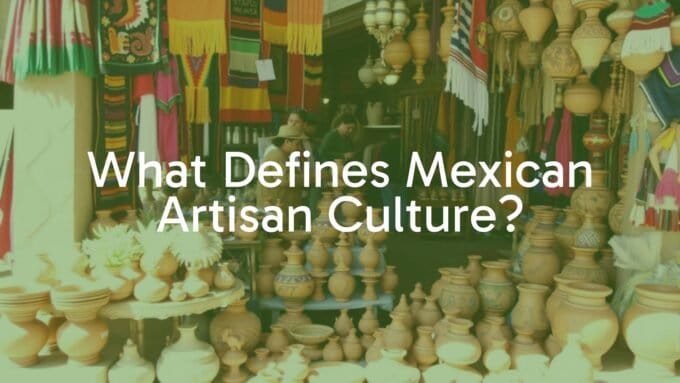
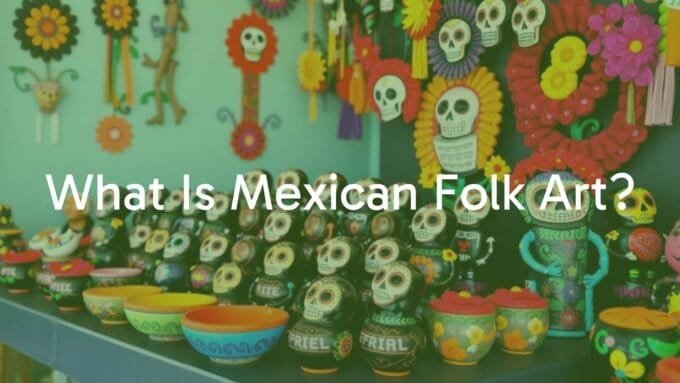
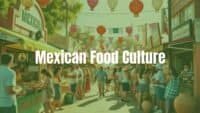
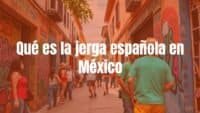
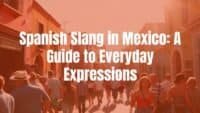
Leave a comment